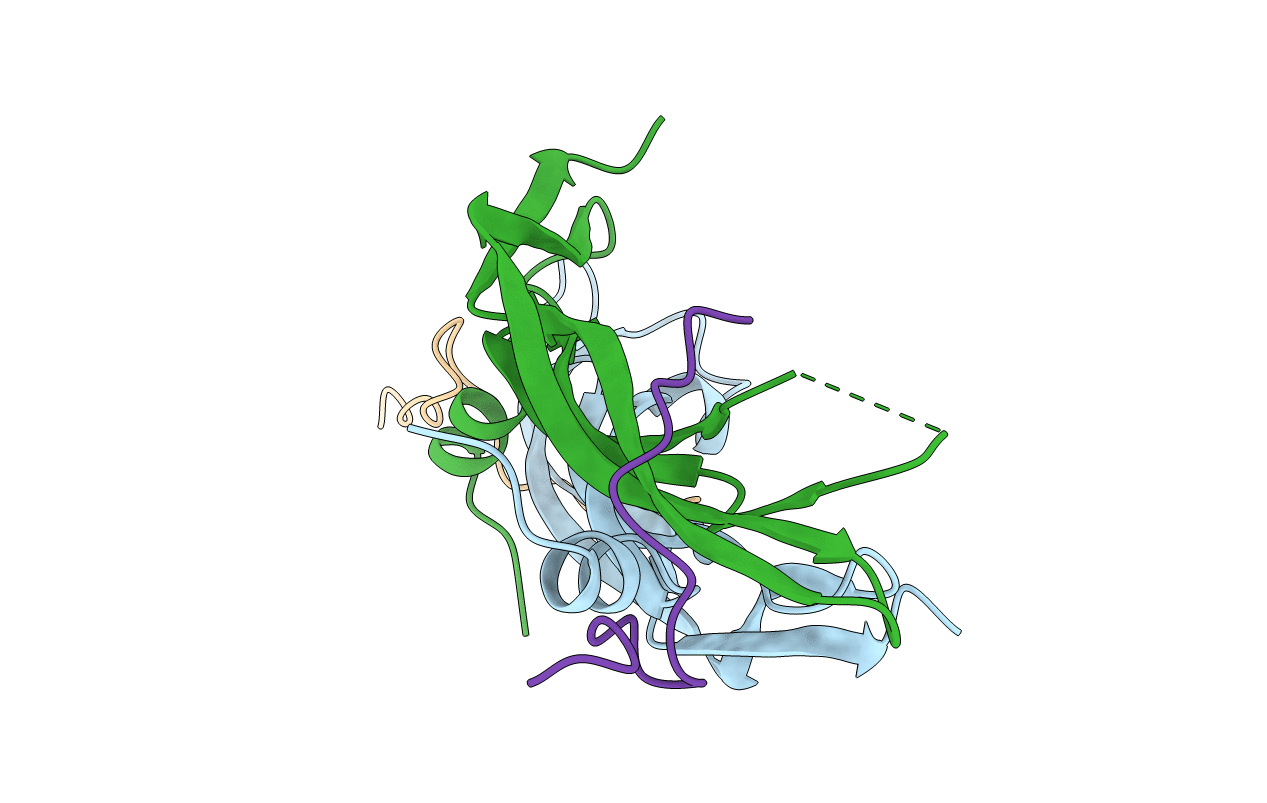Abstact
Vascular endothelial growth factor (VEGF) is a specific and potent angiogenic factor and, therefore, a prime therapeutic target for the development of antagonists for the treatment of cancer. As a first step toward this goal, phage display was used to generate peptides that bind to the receptor-binding domain (residues 8-109) of VEGF and compete with receptor [Fairbrother, W. J., Christinger, H. W., Cochran, A. G., Fuh, G., Keenan, C. J., Quan, C., Shriver, S. K., Tom, J. Y. K., Wells, J. A., and Cunningham, B. C. (1999) Biochemistry 38, 17754-17764]. The crystal structure of VEGF in complex with one of these peptides was solved and refined to a resolution of 1.9 A. The 20-mer peptide is unstructured in solution and adopts a largely extended conformation when bound to VEGF. Residues 3-8 form a beta-strand which pairs with strand beta6 of VEGF via six hydrogen bonds. The C-terminal four residues of the peptide point away from the growth factor, consistent with NMR data indicating that these residues are flexible in the complex in solution. In contrast, shortening the N-terminus of the peptide leads to decreased binding affinities. Truncation studies show that the peptide can be reduced to 14 residues with only moderate effect on binding affinity. However, because of the extended conformation and the scarcity of specific side-chain interactions with VEGF, the peptide is not a promising lead for small-molecule development. The interface between the peptide and VEGF contains a subset of the residues recognized by a neutralizing Fab fragment and overlaps partially with the binding site for the Flt-1 receptor. The location of the peptide-binding site and the hydrophilic character of the interactions with VEGF resemble more the binding mode of the Fab fragment than that of the receptor.



